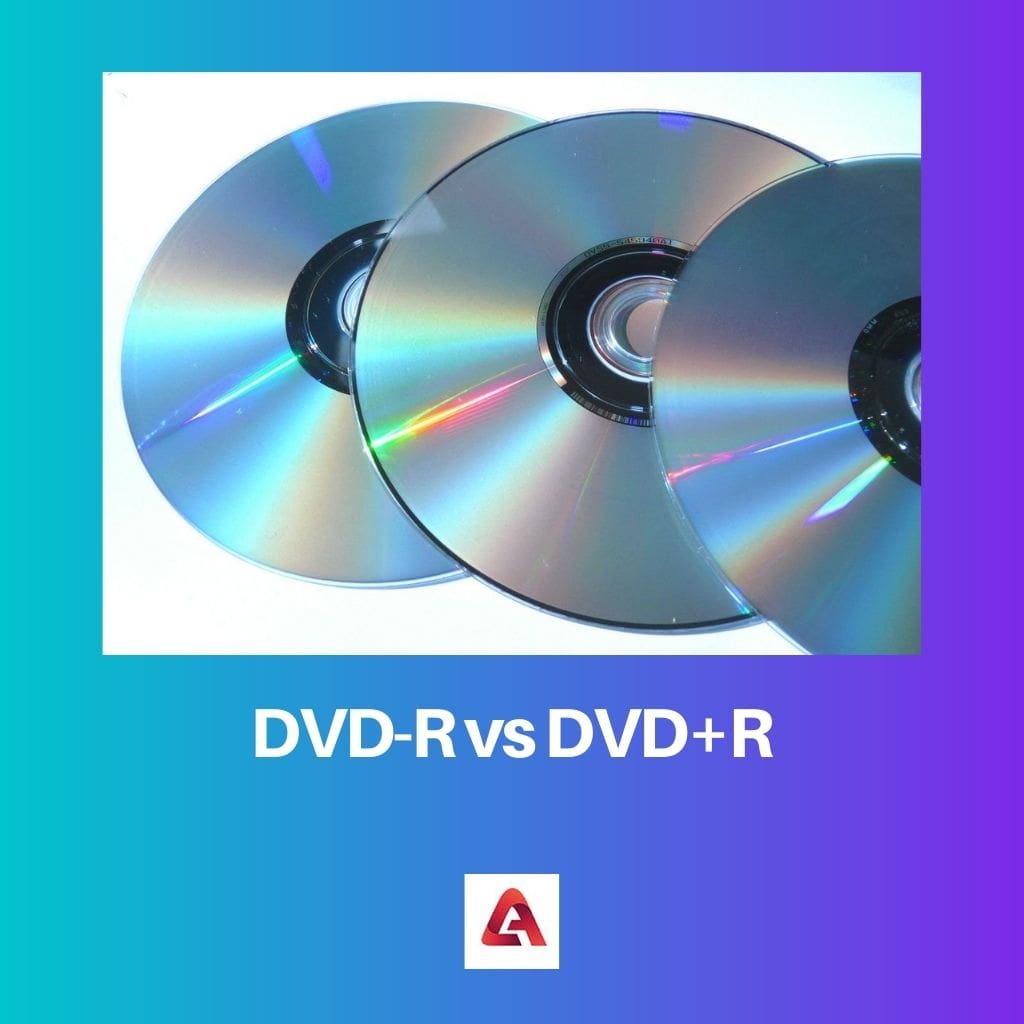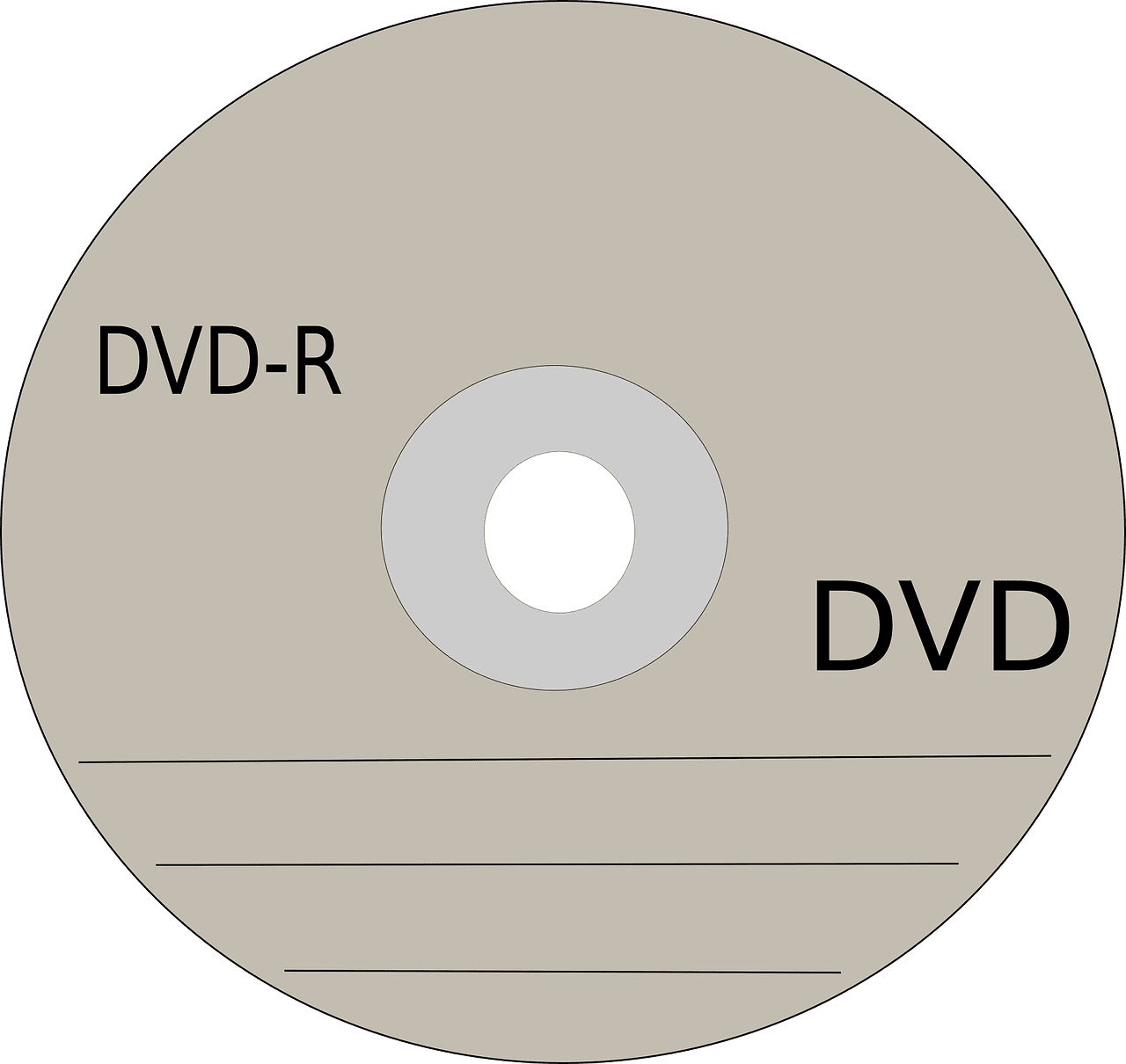There is a lot of confusion between DVD-R and DVD+R as they have similar names, and they also have the same function and a lot of other similarities.
Until now, many of you thought that both DVR-R and DVD+R are the same; while they can have many things in common, they are not the same.
Key Takeaways
- DVD-R is a recordable DVD format that uses a “dash” or “minus” notation, adhering to the standards established by the DVD Forum and widely compatible with most DVD players and drives.
- DVD+R is another recordable DVD format that uses a “plus” notation, developed by the DVD+RW Alliance, offering some technical advantages over DVD-R, such as better error management and faster writing speeds.
- Both DVD-R and DVD+R are recordable DVD formats, but DVD-R follows the DVD Forum standards and is widely compatible, while DVD+R is developed by the DVD+RW Alliance, offering some technical improvements.
DVD-R vs DVD+R
The difference between DVD-R and DVD+R is between their formats and how they control the laser beam’s location on the disc.

DVD-R is an optical disc recording technology or DVD recorder. It gives higher storage capacity. Pioneer developed this in 1997. This format is supported by standard DVD players and in approved DVD forums.
DVD-R provides broad playback compatibility with old players. It is more like a CD-R, but it has more storage capacity.
DVD+R stands for Vertical Disc Recordable; it looks more like a standard DVD. The “R” format in the disc is suitable for retaining data such as video, audio, and pictures. Both DVD-R and DVD+R look pretty similar.
Comparison Table
| Parameter of Comparison | DVD-R | DVD+R |
|---|---|---|
| meaning | It is an optical disc recording that can record video, audio, and pictures. | DVD+R stands for Vertical Disc Recordable, suitable for retaining video, audio, and picture data. |
| Function | DVD-R uses land-PrePits to control the location of the laser position. | It does not use land-PrePits to regulate the laser’s position; instead, it uses wobble frequency. |
| Design | Pioneer designed it in 1997 | Sony and Philips designed it in 2002 |
| Used | Companies use like Pioneer, Toshiba, Hitachi, and Panasonic. | It is used by Sony, Philips, Hewlett-Packard, Ricoh, and Yamaha. |
| Cost | DVD-R is less expensive than DVD+R. | It is costlier than DVD-R. |
| Dual-layer | Both single and dual-layer are available in the market, but they have less variety and availability of discs than DVD+R. | It has more variety and availability of dual layers in the market. |
| Abilities | It cannot record DVDs partially on TV and partially on PC. | It can record DVDs partially on TV and partially on PC. |
| Features | It does not have the features of renaming the file name, movie playlist, and song titles. | It has the features of renaming the file name, movie playlist, and song titles. |
| Capacity | A DVD-R mostly comes with 4 706 074 624 bytes(4488 MB) for single layer; 8.5GB for dual-layer discs. | A standard DVD+R has a storage capacity of 4 706 074 624 bytes (4488 MB) for a single layer; 8.5GB for dual-layer discs. |
| Pronunciation | DVD-R is pronounced DVD dash | DVD+R is pronounced DVD Plus R. |
| Supported | Almost all DVD players support playback for DVD-R media. | Almost all DVD players can support playback for DVD+R media also. |
What is DVD-R?
DVD-R is also known as a digital versatile disc recordable. It looks the same as a regular DVD; it records data like CD-R.
If the DVD-R gets burned, then you can’t use it to rewrite the data again. A single-sided, single-layer disc has a storage capacity of 4.7GB of data, and a double-sided or double-layer disc has a storage capacity of 8.5 GB.
It is the most common format of a writable DVD. DVD-R can be read mainly by all DVD players and DVD ROM.
You can use DVD-R to back gigabytes of data on your PC and make your video DVD. The Apple company computer also supports the DVD-R format.
Its format is very similar to CD-R. DVD-R can record data once, which is permanent in a disc. You cannot register on that disc for the second time.
Two additional DVD-R standards are DVD-RG, which is useful for general purposes, and DVD-RA, which is useful for mastering DVD video, not available for the normal public.
Worldwide famous companies such as Panasonic, Toshiba, Apple Computer, Hitachi, NEC, Pioneer, Samsung, and Sharp support this format type. It is also supported in the DVD forum. This format is cheaper than DVD+R.

What is DVD+R?
DVD+R stands for versatile disc recordable. It looks the same as a standard DVD, there is no physical difference between them, but it can record data.
Single-sided and single-layer DVD+R have a storage capacity of 4.7GB of data, and on the other hand, double-layer discs have a storage capacity of 8.5GB, and double-sided have 9.4 GB.
This format is not very common, like DVD-R, but many DVD players and DVD-ROM drives still support it. It is one of the most expensive formats made by Sony and Philips and used by companies like Sony, Philips, Hewlett-Packard, Ricoh, and Yamaha.
A drive that reads both DVD+R and DVD-R is known as a DVD—r drive. DVD+R can record DVDs partially on TV and partially on PC, and this format can also rename the file name, movie playlist, and song titles. It is a rewritable disc that can erase data and rewrite it.

Main Differences Between DVD-R and DVD+R
- Both DVD-R and DVD+R are recordable disks supported mainly on all devices.
- DVD+R is one costlier recordable disc as compared to DVD-R
- You can only write it once; on DVD+R, you can rewrite the data.
- DVD-R does not check errors while recording. On the other DVD+R, check the error while recording.
- DVD-R has more risk of interference and error.
- DVD-R does not provide users to record and format at the same time. On the other hand, DVD+R provides the users to record and format at the same time.
- Regarding storage capacity, DVD-R has 4 706 074 624 bytes(4488 MB), and it is just for single layer; 8.5GB for dual-layer discs. On the other hand, DVD+R has a storage capacity of 4 706 074 624 bytes (4488 MB) for a single layer and 8.5GB for dual-layer discs.
- https://www.journal.csj.jp/doi/abs/10.1246/bcsj.75.2067
- https://ieeexplore.ieee.org/abstract/document/1263960/

The post offered some useful insights but seemed slightly verbose in its delivery.
I see your point. A more concise approach would likely have made it more engaging.
Yes, it may have benefitted from a bit more brevity.
This could have been more detailed. It feels like certain technical aspects were glossed over.
I understand your point. It would have been beneficial to delve deeper into the technical aspects.
These details provided here are very helpful. This article really cleared the confusion in my mind.
Glad that the article was useful for you!
I also think that the explanation was quite clear and detailed.
The comparisons drawn were quite illuminating. A well-researched post indeed.
I couldn’t agree more. It’s evident that a lot of thought and research went into preparing this content.
The tone of this article was too biased. It should have been more neutral in its approach.
I understand your perspective, and I also felt that neutrality was somewhat lacking.
I found the comparison table quite enlightening. It made it easier for me to understand the differences between DVD-R and DVD+R.
Agreed. The table was an added benefit to an already informative read.
Absolutely, it’s a very well-structured and informative table.
Finally, someone explained the difference between DVD-R and DVD+R comprehensively. I have a clear understanding now.
Yes, this post has put an end to all the confusion around this topic.
I couldn’t agree more. It’s refreshing to come across a post that provides such depth of information.
This article definitely adds clarity to an otherwise perplexing topic. Great breakdown.
I couldn’t have said it better myself. It’s an excellent analysis of the topic.
The explanations are quite thorough. It helped me understand the fundamental differences between DVD-R and DVD+R.
I agree. The depth of explanation does indeed make the topic clearer.
Informative and beneficial. It addressed several queries I had about DVD-R and DVD+R.
I’m glad to hear that this post provided you with the answers you were seeking.